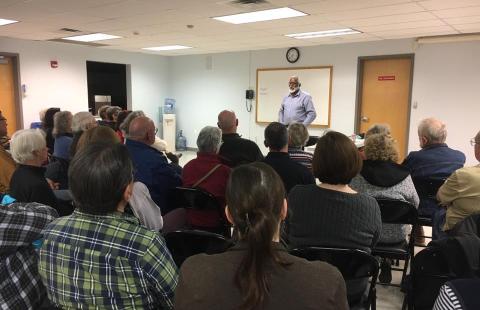What were the specific goals of this creative economy project? Describe the community development challenge or opportunity that your project was designed to address:
Our project addressed challenges our Oyster River community faced on race and bias. We had three goals main project goals:
Goal 1: Create a compassionate, empathetic, and safe series of events from which people can together share, learn, and grow their ideas, values, and perceptions on race, class, diversity and culture.
Goal 2: Welcome all people of diverse backgrounds and ages to the event and ensure that many people from various groups, organizations, and parts of towns are aware of the program, have accessibility to events and feel welcomed to attend.
Goal 3: Evaluate the program's success and inspire continued community building beyond the project's end date.
Who was involved in this project and what did they do? (be sure to include the partners from outside of the creative sector and how local voices were included):
We worked with many partners to make our project successful.
NH Listens provided multiple workshops on race and bias. Artist Richard Haynes led his community painting class series called: Culture Keepers-Culture Makers. Local author Michael C. Ward shared a reading from his memoir: A Colored Man in Exeter. Debby Irving, author of the book Waking Up White and Finding Myself in the Story of Race, presented on her research and memoir. The Madbury Library hosted a memoir writing workshop series. Education consultants led teacher workshops in our schools. Local houses of worship and a town hall donated community space. A UNH professor facilitated film discussions.
How does this project relate to a larger community development strategy?
Oyster River is working to create a more inclusive community, a place where all feel welcome. The Oyster River Community Read supports this effort by offering a variety of programs accessible to all people regardless of ability, gender, or race. The Read's multi-faceted programs provide creative ways for community members to participate in a conversation aimed to unite and bridge.
What projects or places, if any, inspired your approach to this creative economy project?
We were inspired by the work of the Racial Unity Team in Exeter, NH, as well as the One Book, One Community program published by the American Library Association.
